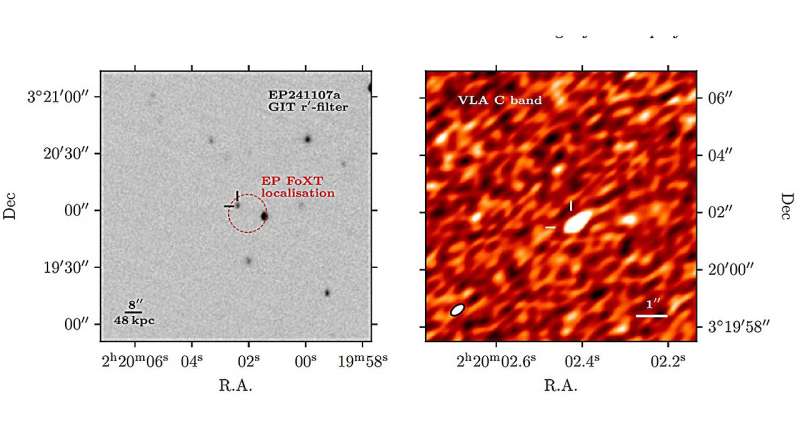Astronomers have identified a potential gamma-ray burst origin for a newly detected fast X-ray transient designated EP241107a. This transient was observed on November 7, 2024, by the Wide-field X-ray Telescope (WXT) aboard the Einstein Probe (EP), a Chinese space telescope launched earlier that year in January. The findings, published on November 4, 2025, on the arXiv preprint server, provide deeper insights into the nature of this intriguing astronomical phenomenon.
Fast X-ray transients (FXTs) are brief bursts of soft X-rays lasting from a few hundred seconds to several hours. Their unpredictable nature makes them difficult to detect, and their origins remain a subject of ongoing research. Current theories regarding their formation include stellar flares, supernova shock breakouts, and long gamma-ray bursts (GRBs). The EP241107a transient has presented a unique opportunity for astronomers to explore these possibilities.
To investigate the properties of EP241107a, a team led by Deepak Eappachen from the Indian Institute of Astrophysics in Bengaluru utilized both ground-based telescopes, including the GROWTH-India Telescope (GIT) and the Himalayan Chandra Telescope (HCT). They sought to gather multiwavelength data and model the transient’s afterglow and host galaxy.
Observational Insights into EP241107a
The observations yielded a radio counterpart for EP241107a at frequencies of 10 GHz and 6 GHz, with flux densities of approximately 232 and 207 μJy, respectively. The team determined a spectroscopic redshift of 0.457 for the transient, which is significant in understanding its distance and characteristics. EP241107a exhibited an X-ray luminosity of around 3.4 quindecillion erg/s in the 0.5-4 keV band, a value notably higher than that of typical supernova shock breakouts.
Approximately one hour after its initial detection, the researchers noted an X-ray afterglow with a luminosity of 0.012 quindecillion erg/s in the 0.5–10 keV band. This afterglow declined rapidly, further adding to the mystery surrounding the event.
The host galaxy of EP241107a was also examined, revealing a stellar mass of about two billion solar masses with an estimated star formation rate of 0.6 solar masses per year. These observations contribute important context to the transient’s potential origins and characteristics.
Linking EP241107a to Gamma-Ray Bursts
In their analysis, the astronomers compared the optical and radio data of EP241107a with other known extragalactic transients. Their findings suggest that this transient aligns with the properties associated with gamma-ray burst afterglows. The team concluded, “We compared the radio and optical light curves of EP241107a with those of other transients and found that EP241107a is consistent with the parameter space occupied by GRB afterglows.”
Despite these compelling insights, the researchers noted an absence of gamma-ray emission and pointed to the inferred on-axis viewing geometry. The energy calculations derived from afterglow modeling indicate that EP241107a may represent an intrinsically faint gamma-ray burst.
This research sheds light on the enigmatic nature of fast X-ray transients and enhances our understanding of high-energy astrophysical phenomena. The study emphasizes the importance of multiwavelength observations in characterizing such events and suggests that further research could yield even more revelations about the universe’s most explosive occurrences.
For more information on this study, refer to the publication by D. Eappachen et al., titled “Characterising EP241107a: Multiwavelength Observations of an Einstein Probe-detected Fast X-ray Transient,” available on the arXiv preprint server.





































































